Are you a Quiet Speculation member?
If not, now is a perfect time to join up! Our powerful tools, breaking-news analysis, and exclusive Discord channel will make sure you stay up to date and ahead of the curve.
New month, new metagame update. It is the way. And I'd like to kick this one off by tempering expectations. The near-perpetual spoiler season we now inhabit did spit out another set. However, Adventures in the Forgotten Realms is no Modern Horizons 2, and did not have that much impact on Modern. The resulting July metagame is an evolution of June's rather than another big shakeup. MTGO is also settling into its usual routine of follow-the-leader and piling into the same deck. I'm wishing for more data sources and paper events to return more and more.
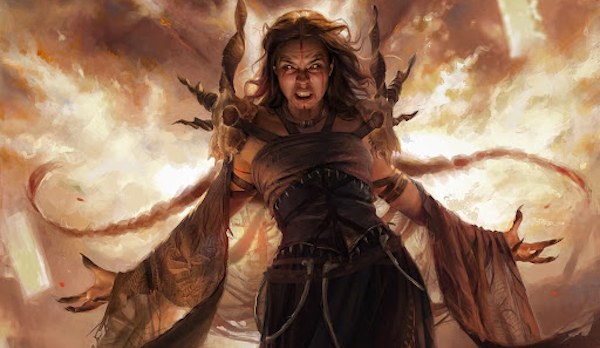
Also, there's going to be a policy change for these articles. I've been a bit all over the place as far as deck names are concerned. This is made worse by Wizards constantly making new factions to use as color-pair names. This was driven home for me recently hearing new players refer to WR Burn as Lorehold Burn rather than Boros Burn. As such to avoid ambiguity I'll be dropping guild names and instead spell out the color pairs. I'll keep using the shard names because they're well established and I've never actually heard anyone use the Ikoria shard names. Of course, when possible I'll use actual deck names but there is some ambiguity there too. Thus I'll be referring to the various tempo and midrange decks that are mostly similar using the naming conventions Jordan outlined here.
July Metagame
To make the tier list, a given deck has to beat the overall average population for the month. The average is my estimate for how many results a given deck “should” produce on MTGO. Being a tiered deck requires being better than “good enough;” in July the average population was 6.75, meaning a deck needed 7 results to beat the average and make Tier 3. This up 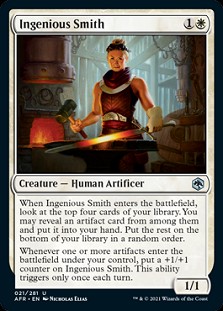 from June, but about average for the past year. Wow, I just realized it's been a year since I brought the monthly update back. How time flies.
from June, but about average for the past year. Wow, I just realized it's been a year since I brought the monthly update back. How time flies.
Anyway, it makes sense for July to be closer to average than June. June was a huge set release and a brewing paradise while July showed some settling. Then we go one standard deviation above average to set the limit of Tier 3 and cutoff for Tier 2. The STdev was 11.24, so that means Tier 3 runs to 19, and Tier 2 starts with 20 results and runs to 32. Subsequently, to make Tier 1, 33 decks are required. This is also pretty typical for MTGO metagame updates.
The Tier Data
The total number of unique decks was down for July from June's 87 to 60. Again, it makes sense as June was very experimental. However, July also had an extremely low deck count, just 405 to June's 457. Some of that is down to smaller Preliminaries, but far more impactful was that July had fewer events. There were a few Preliminaries that never got posted, and there were fewer non-Premier events posted to MTGMelee. I'm not sure why that happened, but it's what I have to work with. Consequently, the higher average and STDev mean that the tier list has shrunk significantly. June boasted the highest number of tiered decks ever with 28. There are only 14 deck in July's tier list. I'm pretty sure that's the lowest total for a full month since I restarted this project. It also means that the MTGO inbreeding problem is back. Most of the players placing in Challenges are there every week, and so the sample is less about the overal meta and more about that group of grinders. But an analysist must work with the data available.
And July is rather weird. Tier 1 is split between Hammer Time and UR Thresh. And they're twice as popular as the next deck. I have a theory on why, but more on that later. To clarify, UR Thresh is not actually deck that cares about achieving threshold, but delirium is quite similar. Rather, it's the more specific name for the UR Tempo deck from June. Thresh decks historically are about a small number of early-deployed threats backed up by lots of non-creature spells, particularly counterspells. That is exactly the strategy most UR Ragavan/Channeler/Murktide Regent decks follow. Similarly, there are versions of BR Ragavan/Channeler decks with more or fewer creatures, and the decks with more get called Stompy.
A New Pillar?
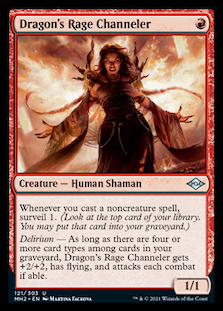 Given how skewed the metagame appears it is natural to assume that Modern is being pulled towards a dual pillar system between Channeler and Urza's Saga. Certainly, I've heard that theory thrown around a lot. There are those that say Ragavan, Nimble Pilferer is the pillar, but Channeler shows up in more decks and is more important to the opperation of said decks. Ragavan seems to get thrown in "just because" a lot, but Channeler requires some build around and to me that's defining of being a pillar more than just seeing lots of play. Also, I'm on board with considering Channeler a new Modern pillar for that very reason.
Given how skewed the metagame appears it is natural to assume that Modern is being pulled towards a dual pillar system between Channeler and Urza's Saga. Certainly, I've heard that theory thrown around a lot. There are those that say Ragavan, Nimble Pilferer is the pillar, but Channeler shows up in more decks and is more important to the opperation of said decks. Ragavan seems to get thrown in "just because" a lot, but Channeler requires some build around and to me that's defining of being a pillar more than just seeing lots of play. Also, I'm on board with considering Channeler a new Modern pillar for that very reason.
Saga, on the other hand, I'm skeptical of. Outside of Hammer Time, Saga decks were pretty poor performers in July. The play pattern is a rolling snowball of advantage, but it comes at a significant tempo cost. All the Underworld Cookbook decks and incidental Saga decks took a beating, so I'm not convinced Saga is that good in general.  It's extremely good in Hammer Time because that deck only needs a few lands and Saga fills a number of holes in the deck. Older versions struggled with running out of threats in general but particularly suffered when they didn't hit Stoneforge Mystic to find their hammers. Saga makes threats and then Mystics for a Hammer. Or other bullet if necessary. Being good in a specific deck doesn't make a card a pillar.
It's extremely good in Hammer Time because that deck only needs a few lands and Saga fills a number of holes in the deck. Older versions struggled with running out of threats in general but particularly suffered when they didn't hit Stoneforge Mystic to find their hammers. Saga makes threats and then Mystics for a Hammer. Or other bullet if necessary. Being good in a specific deck doesn't make a card a pillar.
Shardless Agent, on the other hand, is making a case for itself. Tier 2 is just decks that are only really playable thanks to Agent, and it shows up in plenty of other cascade decks and even occasionally as a value play in creature decks. Widespread success in many decks is more pillar-like to me, so watch out for Agent.
The Pattern Repeats
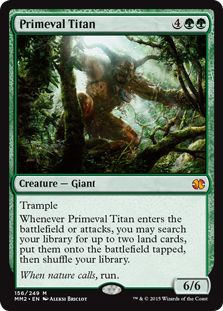 Remember a few weeks ago when I begged MTGO to get help for its focusing problems? Well, the phenomenon I commented on there did in fact repeat again. June's top deck was Amulet Titan. I predicted that Titan would immediately fall off because that's what had happened the last three months. Make it four for four because Titan is at the bottom of Tier 3. And I'm not saying that I'm magic, but after I complained, Amulet picked up just enough to make the Tier list, preventing the worst swing ever from happening. But I'm also not saying that I'm not magic. Thus I'm going to predict that the pattern will continue and Hammer Time and UR Thresh will fall off substantially in August. Hammer Time is the top deck, but there's so little space between them I'm calling it a tie. So both decks must weather the curse.
Remember a few weeks ago when I begged MTGO to get help for its focusing problems? Well, the phenomenon I commented on there did in fact repeat again. June's top deck was Amulet Titan. I predicted that Titan would immediately fall off because that's what had happened the last three months. Make it four for four because Titan is at the bottom of Tier 3. And I'm not saying that I'm magic, but after I complained, Amulet picked up just enough to make the Tier list, preventing the worst swing ever from happening. But I'm also not saying that I'm not magic. Thus I'm going to predict that the pattern will continue and Hammer Time and UR Thresh will fall off substantially in August. Hammer Time is the top deck, but there's so little space between them I'm calling it a tie. So both decks must weather the curse.
Power Rankings
Tracking the metagame in terms of population is standard practice. However, how do results actually factor in? Better decks should also have better results. In an effort to measure this, I use a power ranking system in addition to the prevalence list. By doing so I measure the relative strengths of each deck within the metagame. The population method gives a decks 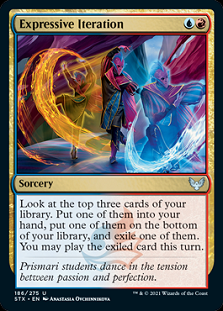 that consistently just squeaks into Top 32 the same weight as one that Top 8’s. Using a power ranking rewards good results and moves the winningest decks to the top of the pile and better reflects its metagame potential.
that consistently just squeaks into Top 32 the same weight as one that Top 8’s. Using a power ranking rewards good results and moves the winningest decks to the top of the pile and better reflects its metagame potential.
Points are awarded based on the population of the event. Preliminaries award points for record (1 for 3 wins, 2 for 4 wins) and Challenges are scored 3 points for Top 8, 2 for Top 16, 1 for Top 32. If I can find them, non-Wizards events will be awarded points according to how similar they are to Challenges or Preliminaries. Super Qualifiers and similar level events get an extra point if they’re over 200 players, and a fifth for over 400 players. There was one Super Qualifiers awarding 4 points in July and a Showcase Challenge that awarded 5 points.
The Power Tiers
The total points in July were actually up from June. This tracks given bigger events, though is surprising given the smaller population. June had 706 total points while July has 741. That's still pretty low for a full month, but it is closer to the normal average. Had there been more usable events from MTGMelee, July would have been a more normal month points-wise. The few events I saw were too small to use, and I didn't see usable events anywhere else either. The average points were 12.35, so 13 makes Tier 3. The STDev was 21.76, which is on the higher end, so add 22 and Tier 3 runs to 35 points. Tier 2 starts with 36 points and runs to 58. Tier 1 requires at least 59 points.
There are 15 decks in the power tiers, which is up one from population. Urza's Kitchen didn't make the transition from population to power, which in my mind cements Saga's decline. It's just not as good as everyone thought. In Kitchen's place are Mill and a resurgent Heliod Company. Both did pretty poorly overall in population, but in the events they did place, they placed very high. This strongly suggests that they're out of the mainstream and are being held up by enthusiasts and specialists. However, both also seem like good choices in a metagame defined by Hammer Time and UR Thresh.
The top two tiers have expanded and overall this looks more like the typical tier list. I did check for outliers, and neither Tier 1 deck were over the line. Cascade Crashers moves up to Tier 1 thanks to many high finishes and is replaced by BR Stompy and UR Prowess. The latter has fallen a lot from its glory days, but remains a very strong contender in the metagame. Grixis Channeler is a blanket term for very similar not-quite-midrange, not-quite-tempo, definitely not control or aggro decks build around Channeler and Kolaghan's Command. And given its move up the rankings late in the month is my pick for where the renters will move to for August. We'll see how psychic I am in 42 days.
Average Power Rankings
Finally, we come to the average power rankings. These are found by taking total points earned and dividing it by total decks, which measures points per deck. I use this to measure 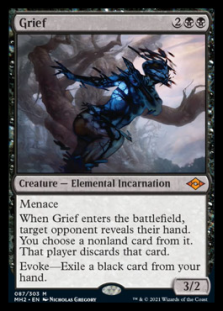 strength vs. popularity. Measuring deck strength is hard. There is no Wins-Above-Replacement metric for Magic, and I'm not certain that one could be credibly devised. The game is too complex and power is very contextual. Using the power rankings certainly helps, and serves to show how justified a deck’s popularity is. However, more popular decks will still necessarily earn a lot of points. Which tracks, but also means that the top tier doesn't move much between population and power, and obscures whether they really earned their position.
strength vs. popularity. Measuring deck strength is hard. There is no Wins-Above-Replacement metric for Magic, and I'm not certain that one could be credibly devised. The game is too complex and power is very contextual. Using the power rankings certainly helps, and serves to show how justified a deck’s popularity is. However, more popular decks will still necessarily earn a lot of points. Which tracks, but also means that the top tier doesn't move much between population and power, and obscures whether they really earned their position.
This is where the averaging comes in. Decks that earn a lot of points because they get a lot of results will do worse than decks that win more events, indicating which deck actually performs better. A higher average indicates lots of high finishes, where low averages result from mediocre performances and high population. Lower-tier decks typically do very well here, likely due to their pilots being enthusiasts. So be careful about reading too much into the results.
The Real Story
When considering the average points, the key is to look at how far-off a deck is from the baseline stat (the overall average of points/population). The closer a deck’s performance to the baseline, the more likely it is to be performing close to its “true” potential. A deck that is exactly average would therefore perform exactly as well as expected. The further away the greater the deviation from average, the more a deck under- or over-performs. On the low end, the deck’s placing was mainly due to population rather than power, which suggests it’s overrated. A high-scoring deck is the opposite.
The baseline was pretty average as these go, but appears very low in the standings. That's what happens when there are events awarding extra points. It's easier for decks to beat the average but it's rare to see many unique decks get more than one point, which really kills the average.
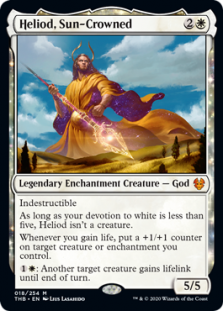 As previously mentioned, Heliod Company did perform very often. But when it does, it does very well and took the top slot, indicated that it was quite underplayed in July. Thresh and Hammer Time appearing in the middle of the pack is actually fairly worrying for them, as it again suggests that they were more popular than actually good. However, they're enough above baseline to say that their population is justified.
As previously mentioned, Heliod Company did perform very often. But when it does, it does very well and took the top slot, indicated that it was quite underplayed in July. Thresh and Hammer Time appearing in the middle of the pack is actually fairly worrying for them, as it again suggests that they were more popular than actually good. However, they're enough above baseline to say that their population is justified.
Amulet Titan, on the other hand, had an abysmal showing. That is really weird, since it's normally in the upper third of the standings. It's been an enthusiast deck for a long time, and that meant specialists doing well with their special deck. I wonder where they went to allow Amulet to fall this hard. Elementals appears to be the new It Deck, gaining a lot of attention, but its position on this list says that's the wrong choice. This is down to a surge of interest following Kanister winning a Challenge with Elementals and players copying him.
All for Now
And Modern rolls on. The MTGO metagame continues to churn violently, and I will continue to observe and record. And hopefully refine my psychic powers.




